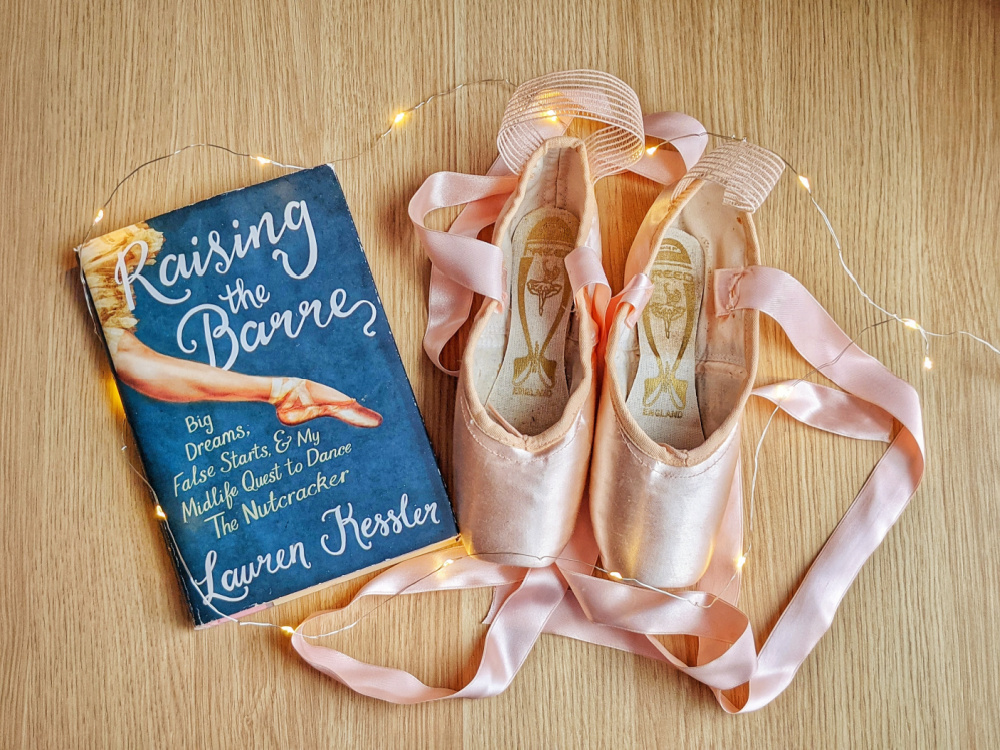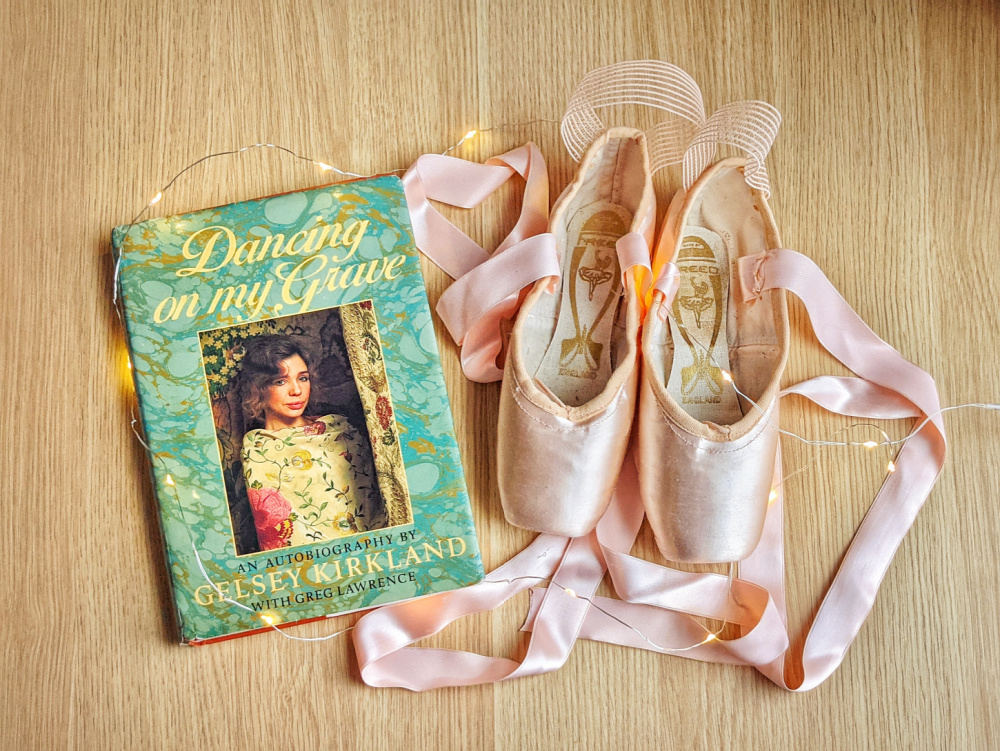

I launched Ballet Book Club last year, and since then, it has grown into a cozy group of ballet loving readers from all over the world...
In February of 2020, when I shared my idea for Ballet Book Club on Instagram, I had no idea that in March, the entire world would shut down for the COVID-19 pandemic.
More than ever before, people turned to the internet to maintain a sense of community as we sheltered at home to keep ourselves and others safe.
Starting Ballet Book Club gave me focus and purpose in a year full of loss and sadness: loss of in-person ballet classes, loss of holiday gatherings, and so much more.
Reading books and planning discussions kept me from wallowing. (Well, okay, there was some wallowing.) But the fact that we have weekly discussions in our Facebook group meant that no matter what, I was always reading, writing, and thinking about something beyond my own circumstances.
Our book selections were sometimes dark, sometimes hopeful, sometimes bewildering. (I think we all have complicated feelings about George Balanchine after reading Suzanne Farrell's autobiography!)
But the common thread through all the books and discussions was this: our shared love of an art form that pushes us to seek and create beauty even when life is hard.
Because making life more beautiful is a way to heal, to stay inspired, and to keep going.
From March through December, our book club featured ten books of the month.
Here's a recap of our year in Ballet Book Club...

In March, members voted to read the novel Cantique by Joanna Marsh.
It's no surprise that our members chose this novel, for Cantique is about an adult ballet student, and our Ballet Book Club community is mostly made up of recreational adult ballet dancers.
Many of us felt a kinship to the main character Colette, with her wistful love of ballet, and we appreciated how well the author articulated the adult ballet experience. For too many of us, feeling fully understood as passionate recreational dancers is a rare and special treat. (Excitingly, there is now a sequel: La Follia!)

Our next book also centered around the topic of adult ballet.
In April, our members voted for Raising the Barre, a memoir about Lauren Kessler's endeavor to dance the Nutcracker in her fifties.
Raising the Barre was a favorite among book club members, for Kessler's writing is hilariously self-deprecating, endearing, and relatable. Kessler expresses her fears, insecurities, and ultimate triumphs in a way that kept us all eagerly turning pages.
I connected with Kessler on Instagram, and she generously offered to do a Zoom Q&A with us. We had a blast chatting with her, and she even showed us a few behind the scenes photos from her time with Eugene Ballet Company.

In May, we voted from a selection of autobiographies by New York City Ballet ballerinas.
Dancing Through It by Jenifer Ringer won our vote.
Ringer, a former NYCB principal dancer, shares fascinating details about professional ballet life. But the compelling part of this book is how Ringer's struggle with an eating disorder leads to her dismissal from the company. Even more compelling is how she recovers and returns, triumphantly, to the NYCB stage.
Many of us appreciated Ringer’s honesty in expressing the ups and downs of her career.

In June, we voted from a selection of historic ballet novels.
Our members voted to read The Painted Girls by Cathy Marie Buchanan.
This book turned out to be much darker and heavier than I expected, but I enjoyed the detailed writing — which felt like looking through a window into 19th century Paris — and I learned a lot about the history of the Paris Opéra Ballet, especially the lives of the young dancers, often called petits rats.
The stark contrast of the glamour of the stage and the poverty — and frequent abuse — of the dancers was hard to swallow at times. The book fittingly begins with the epigraph: “No social being is less protected than the young Parisian girl.”

In July we voted from a selection of autobiographies by Black ballerinas.
We landed on Michaela DePrince's memoir Taking Flight.
In Taking Flight, Michaela describes her journey from her early childhood in war-torn Sierra Leone, Africa to her adoption by an American family to her ballet training and ultimate achievement of becoming a professional ballerina. Many of us felt inspired by DePrince’s resilience, raw talent, and most of all, her hope.
The magazine cover of a ballerina that DePrince carried with her throughout the tragedies of her early childhood is a powerful symbol of how art can give us hope for a better future, even in the most dire circumstances.

In August, our vote led us to read the book that inspired the liveliest discussions of the year: Holding Onto the Air by Suzanne Farrell.
Suzanne Farrell is a celebrated NYCB ballerina and the most famous muse of choreographer George Balanchine. We loved Farrell's descriptions of her career and how she felt about dancing, but we did not love the way Balanchine — revered as he may be — treated her.
We discussed feminism, toxic relationships, ballet culture, and the problems that arise when one sole person is given complete control of an organization without any checks and balances.

In September, we decided to read Gelsey's Kirkland's memoir Dancing On My Grave.
Many of us felt it would be interesting to compare and contrast two ballerinas (Farrell and Kirkland) who both danced under Balanchine's artistic directorship but who ultimately had very different feelings toward him. As it turns out, Kirkland moved on from NYCB early in her career and Balanchine is little more than a background character in her book.
Kirkland’s memoir focuses on her time at American Ballet Theatre, her relationship with Mikhail Baryshnikov, and her experiences with drug abuse and an eating disorder. This book inspired discussions about ballet culture and how Kirkland's problems could have been prevented, had she had more support.

In October I stepped aside from my role of planning and writing discussions, and we had our first volunteer host: ballet book club member Sanja Tesic.
Sanja chose the novel Astonish Me by Maggie Shipstead. Much of this novel is based in New York City during the same time period as Farrell and Kirkland’s careers, so it was interesting to read this book right after reading their memoirs — especially since Astonish Me features characters who are based on real-life figures in the ballet world.
Shipstead's prose is gripping and emotional, and the book explores, through its characters, what happens when a person’s talent does not match her aspirations; it also explores how people who are talented might not always use their gifts for good — but how they are often adored, anyway.
I think what impressed us most about this novel was the fact that the author never danced. Her detailed, specific descriptions of ballet life were spot-on.
Well done, Shipstead. Well done.

In November, we had our second volunteer host: book club member Anna Betz.
Anna chose Phil Chan's Final Bow for Yellowface because she believes everyone who loves ballet must read this book. (I wholeheartedly agree.)
Final Bow taught us about Asian representation on the ballet stage and how, all too often, that representation happens through a more than one-hundred-year-old Euro-centric lens. We discussed the differences between appreciation and appropriation and how we can all work together to make the ballet world more inclusive for all.

In December, I resumed hosting discussions, feeling refreshed and incredibly grateful for our two guest hosts.
I planned for our December book to be a Christmas or Nutcracker themed dance novel, but that was harder to find than I expected! I found plenty of Nutcracker retellings but many were based on the original classics by either E.T.A Hoffman or Alexander Dumas and were not at all dance-related.
Ultimately, we read the most charming children's novel: Nutcracker Mice by Kristin Kladstrup.
Nutcracker Mice tells the story of a mice community — with its own ballet company! — that dwells in the attic of the Mariinsky Theatre.
Set in 1892 — the year the Nutcracker ballet debuted for the first time — the story follows the ups and downs of the mice's ballet company. Many of us were surprised by what a page-turner this book was, with a brave heroine willing to risk her life for her fellow mice and do everything she could to keep her ballet company relevant to the audiences of St. Petersburg.
On a sidenote, last year I also designed and released our first Ballet Book Club t-shirt. (More bookish t-shirt designs are in the works!)
And that sums our wonderful year of Ballet Book Club in 2020!
I hope you'll join us for another fabulous year in 2021.
We already have our first host and book lined up — Nicole Gauvreau will be leading our discussions of A Company of Swans throughout February.
If you’d like a more detailed synopsis of each book listed above, check out our Ballet Book Club website, where we keep our official book lists. And go ahead and join the Ballet Book Club Facebook group if you haven’t yet.
May we always read and always dance!

